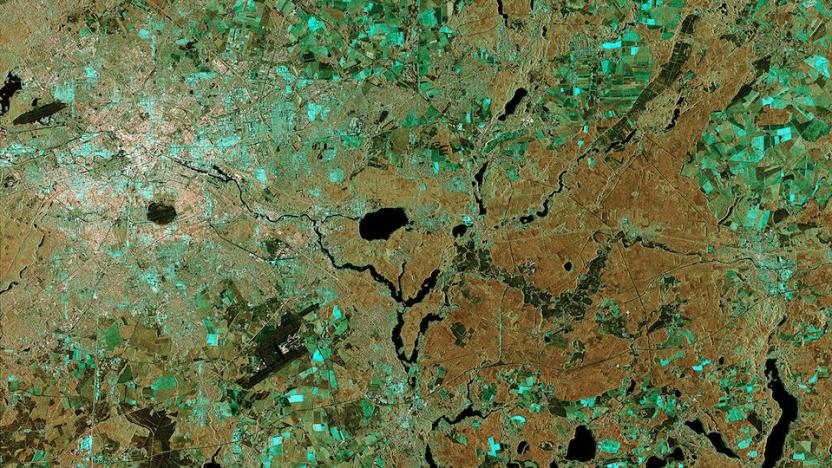Alphasat
Latest

The Big Picture: a laser-beamed satellite image of Berlin
At first glance, the satellite image above may seem like one of the many that have been shared in the past. What you're looking at, though, was delivered in a much more timely manner than the imagery which came before it. For the first time ever, the European Space Agency has used a laser to beam a photograph to Earth -- of Berlin, in this case -- stretching around 36,000 km (or roughly 22,000 miles) across space and delivering it almost in real time. The ESA was able to accomplish this by linking up its Sentinel-1 and Alphasat satellites, both of which are equipped with a laser communications system that makes it possible to deliver data at super high speeds.

Cover your eyes: NASA, ESA set to bring broadband speeds to space using lasers
NASA and the European Space Agency (ESA) will soon bring a much-needed data link speed increase between satellites, spacecraft and Earth using laser beams, according to Nature. ESA will get the ball rolling on July 25th when it launches the Alphasat, which will communicate at 300 Mbps with the German Tandem-X satellite over an experimental optical communication terminal. NASA's LADEE Lunar Atmosphere and Dust Environment Explorer (which launches September 5th) will take a different tack, however. That mission will communicate directly with the Earth all the way from the moon's orbit, thanks to an atmosphere-penetrating AM-style modulated infrared laser beam and eight ground telescopes. The use of lasers helps both missions avoid radio interference in space and on earth, while bringing six times greater speed from the moon than a radio-based system. Just to be on the safe side, though, NASA does have a backup radio link for LADEE -- as good as lasers are, they can't cut through a solid cloud layer.

